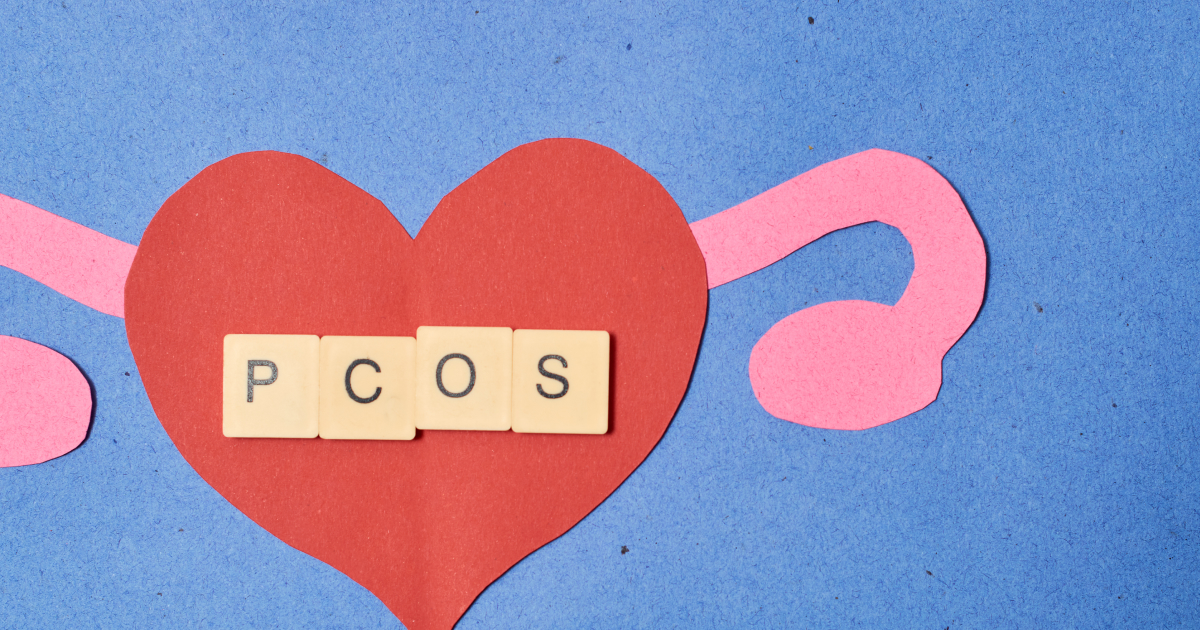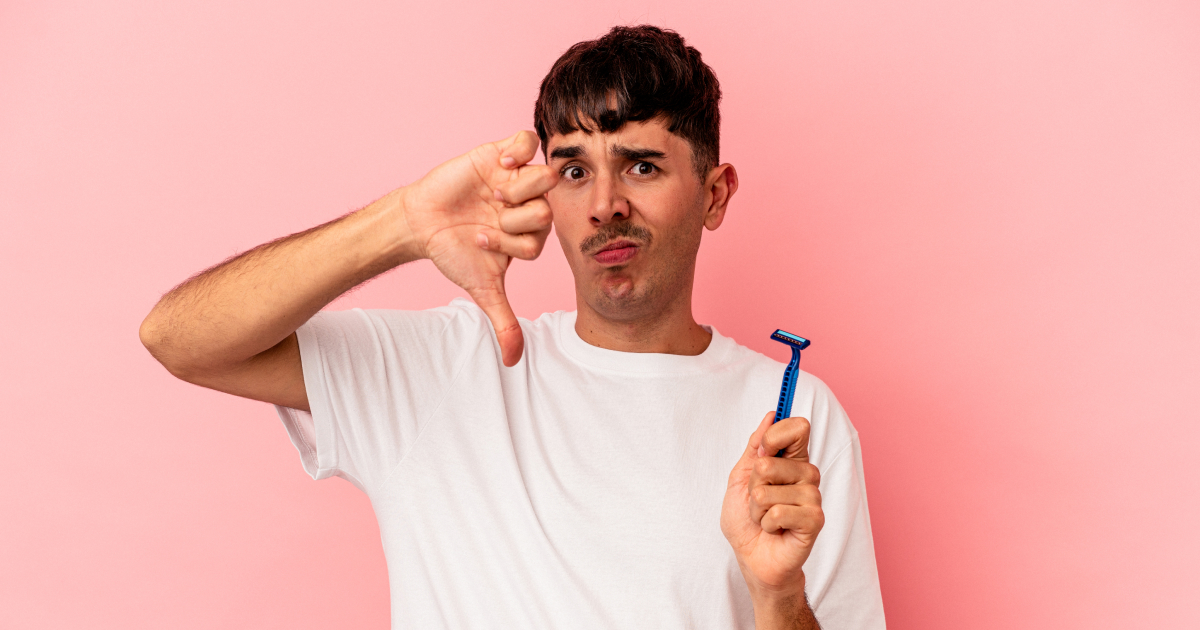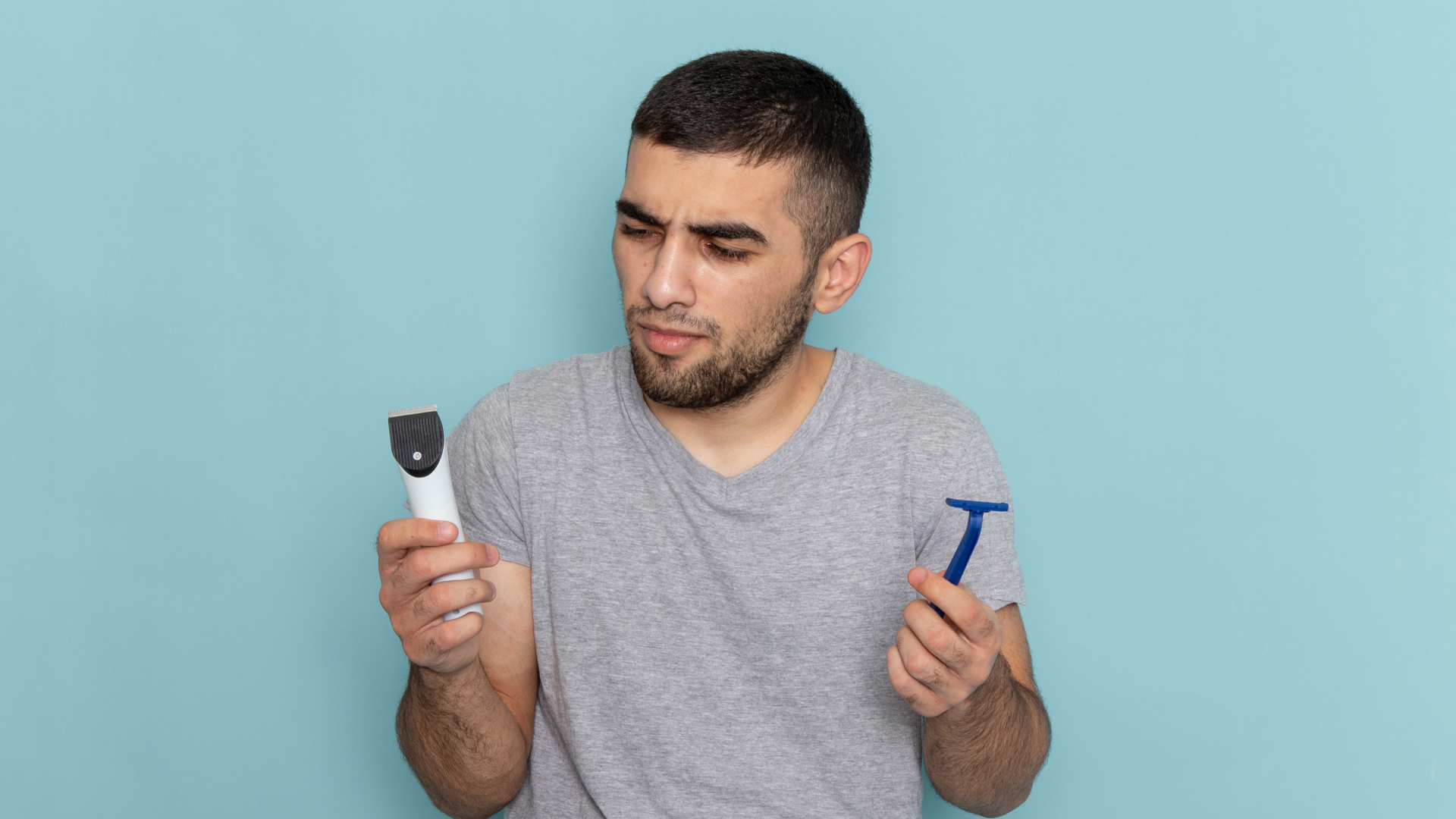Have you noticed excessive hair growth on your face, chest, or back that seems unusual for a woman? You’re not alone. Millions of women worldwide experience hirsutism, a condition that causes unwanted, male-pattern hair growth and can significantly impact self-confidence and quality of life.
Hirsutism is more than just having a bit of extra body hair—it’s a medical condition characterized by excessive growth of dark, coarse hair in areas where women typically have little to no hair. This includes the face (especially the chin and upper lip), chest, lower abdomen, back, and inner thighs. While it might seem like a purely cosmetic concern, hirsutism often signals underlying hormonal imbalances that need medical attention.
At Conscious Medicine in Alpharetta, we understand that dealing with excessive hair growth can be emotionally challenging and physically frustrating. Through our functional medicine approach, we help women identify the root causes of their hirsutism and develop comprehensive treatment plans that address both the visible symptoms and the underlying health issues. We believe in treating the whole person, not just the symptoms, to achieve lasting results.
This comprehensive guide will cover everything you need to know about hirsutism: what causes it, how to recognize the symptoms, when testing is necessary, and what treatment options—both medical and natural—are available to help you manage this condition effectively.
2. What Is Hirsutism?
Hirsutism is defined medically as the excessive growth of terminal hair (thick, dark, coarse hair) in women in a male-like pattern. This condition affects approximately 5-10% of women worldwide, though the prevalence varies by ethnicity and geographic region.
It’s important to understand the difference between normal body hair and hirsutism. Every woman has body hair, and the amount varies based on genetics and ethnicity. What distinguishes hirsutism is the presence of terminal hair—the same type of thick, pigmented hair found on the scalp—in areas where women typically have only fine, light vellus hair (often called “peach fuzz”).
Hair Growth Patterns: Vellus vs. Terminal Hair
Understanding the two types of body hair helps clarify what makes hirsutism different from normal variation:
Vellus Hair: This is the fine, short, light-colored hair that covers most of the body. It’s barely noticeable and serves to regulate body temperature. Most women have vellus hair on their face, chest, and back.
Terminal Hair: This is thick, long, pigmented hair like what grows on your scalp, eyebrows, and eyelashes. After puberty, terminal hair also develops in the underarms and pubic area in both men and women. In hirsutism, terminal hair develops in areas that should normally have only vellus hair.
The transformation of vellus hair to terminal hair in male-pattern areas is what characterizes hirsutism. This change is typically driven by androgens (male hormones), which all women have in small amounts but which can become elevated or cause increased sensitivity in certain conditions.
3. What Are the Symptoms of Hirsutism?
Common Areas Affected
The primary symptom of hirsutism is excessive hair growth in areas where men typically grow hair but women usually don’t. These areas include:
- Chin and Upper Lip: Often the first and most distressing area for women, facial hair can range from a few coarse hairs to a full beard-like growth pattern.
- Chest: Hair may appear between the breasts, around the nipples, or across the entire chest area.
- Lower Abdomen: A diamond or triangular pattern of hair extending from the pubic area up toward the navel, sometimes called a “happy trail.”
- Back: Both upper and lower back can be affected, with hair appearing along the spine or across the shoulders.
- Thighs: Particularly the inner thighs, where thick, dark hair may develop.
Associated Symptoms of Androgen Excess
Hirsutism rarely occurs in isolation. It’s often accompanied by other signs of elevated androgens:
- Acne: Persistent or severe acne, particularly along the jawline and chin, that doesn’t respond well to typical treatments. Adult-onset acne or worsening acne can indicate hormonal imbalance.
- Oily Skin: Excessive oil production leading to shiny skin, enlarged pores, and a greasy feeling even shortly after washing.
- Irregular Periods: Menstrual irregularities are common and may include infrequent periods (oligomenorrhea), absent periods (amenorrhea), or unpredictable cycle lengths.
- Hair Thinning on Scalp: While body hair increases, many women with hirsutism experience male-pattern baldness, with thinning at the crown and temples.
- Deepened Voice: In severe cases of androgen excess, the voice may become lower and more masculine-sounding.
4. What Causes Hirsutism?
Polycystic Ovary Syndrome (PCOS): The most common cause of hirsutism, Polycystic Ovary Syndrome (PCOS) accounts for 70-80% of cases. This hormonal disorder is characterized by irregular periods, multiple small cysts on the ovaries, elevated androgen levels, and often insulin resistance. Women with PCOS typically experience not just hirsutism but also weight gain, difficulty losing weight, acne, and fertility challenges.
Adrenal Gland Disorders: The adrenal glands produce androgens, and several disorders can cause excess production:
- Congenital Adrenal Hyperplasia (CAH): A genetic condition affecting cortisol production
- Cushing’s Syndrome: Excess cortisol production from various causes
- Adrenal Tumors: Rare but can cause rapid-onset hirsutism
Medications: Certain medications can trigger hirsutism, including anabolic steroids, danazol (used for endometriosis), testosterone supplements, minoxidil (ironically used for scalp hair loss), and some progestins in birth control pills.
Idiopathic Hirsutism: In 10-20% of cases, women have normal hormone levels with no identifiable cause. This is thought to result from increased hair follicle sensitivity to normal androgen levels.
What Causes Hirsutism Without PCOS?
When PCOS is ruled out, other causes include:
- Adrenal or pituitary abnormalities
- Increased sensitivity of hair follicles to androgens
- Genetic and ethnic factors
- Thyroid disorders
- Insulin resistance without full PCOS
- Rare ovarian tumors
What Hormone Imbalance Causes Chin Hair?
Elevated testosterone or DHEA-S (dehydroepiandrosterone sulfate) levels are the primary hormonal culprits behind chin hair in women. These androgens stimulate hair follicles to produce terminal hair instead of vellus hair. Even slightly elevated levels, or normal levels with increased follicle sensitivity, can cause facial hair growth.
5. Is Hirsutism the Same as PCOS?

Clarifying the Relationship
It’s crucial to understand that PCOS is a condition, while hirsutism is a symptom of high androgen levels. Think of it this way: PCOS is the underlying disorder that often causes hirsutism, but hirsutism can occur without PCOS.
How PCOS Causes Excess Hair Growth?
In PCOS, hormonal disruption leads to:
- Ovaries producing excess testosterone
- Insulin resistance further increases androgen production
- Reduced sex hormone-binding globulin (SHBG), leaving more free androgens
- Stimulation of hair follicles in androgen-sensitive areas
Overview of Four Stages of PCOS
PCOS severity can be categorized into stages:
- Mild: Irregular periods, minimal hirsutism, some ovarian cysts
- Moderate: More irregular periods, noticeable hirsutism and acne, weight gain
- Severe: Absent periods, significant hirsutism, insulin resistance
- Advanced: Long-term complications ,including diabetes, cardiovascular disease risk
Also read, Understanding PCOS Belly Shape
Note: Hirsutism Can Occur Without PCOS
Remember, you can have hirsutism from adrenal disorders, medications, tumors, or idiopathic causes without having PCOS. Proper diagnosis is essential for appropriate treatment.
6. At What Age Does Hirsutism Start?
Common Age of Onset
Hirsutism commonly appears after puberty when androgen levels naturally rise. Most women first notice symptoms during their teenage years or early twenties, though it can develop at any age.
Role of Puberty, Menopause, and Pregnancy
- Puberty: The surge in hormones during puberty can trigger hirsutism in predisposed individuals. Some increased body hair is normal during puberty, but excessive growth in male-pattern areas indicates hirsutism.
- Pregnancy: Hormonal changes during pregnancy can temporarily worsen hirsutism, though it often improves postpartum.
- Menopause: As estrogen levels decline relative to androgens during menopause, many women notice increased facial hair, particularly on the chin and upper lip.
Early recognition and treatment can prevent worsening symptoms and address underlying health issues before they cause additional problems.
7. How to Test for Hirsutism
Clinical Evaluation
Visual Grading: Healthcare providers use the Ferriman-Gallwey score to assess hair distribution and density across nine body areas.
Laboratory Tests
Essential hormone tests include:
- Serum Testosterone: Both total and free testosterone levels help identify androgen excess
- DHEA-S: Elevated levels suggest adrenal causes
- LH/FSH Ratio: A ratio greater than 2:1 often indicates PCOS
- Prolactin: Rules out prolactinoma as a cause
- 17-Hydroxyprogesterone: Screens for congenital adrenal hyperplasia
Imaging
- Pelvic Ultrasound: Identifies polycystic ovaries characteristic of PCOS
- CT/MRI: Used if an adrenal tumor is suspected based on very high DHEA-S levels
Importance of Consulting an Endocrinologist
An endocrinologist specializes in hormonal disorders and can provide expert diagnosis and treatment planning, especially for complex cases.
8. Treatment Options for Hirsutism

8.1 Medical Treatments
First-line Treatment for Hirsutism in PCOS:
Combined Oral Contraceptives: Birth control pills containing estrogen and progestin help by:
- Suppressing ovarian androgen production
- Increasing SHBG to bind free testosterone
- Regulating menstrual cycles
- Results are typically visible after 6-12 months
Anti-androgen Medications:
Spironolactone: The most commonly prescribed anti-androgen
- Blocks androgen receptors
- Typical dose: 50-200mg daily
- Side effects: irregular periods, breast tenderness
Finasteride: Blocks the conversion of testosterone to DHT
- Effective but requires birth control due to pregnancy risks
Flutamide: Potent but requires liver monitoring
Topical Treatments:
Eflornithine (Vaniqa) Cream:
- Slows facial hair growth
- Applied twice daily
- Results in 4-8 weeks
- Hair returns if treatment stops
Procedural Treatments:
- Laser Hair Removal: Long-term reduction requiring 6-8 sessions
- Electrolysis: Permanent but time-consuming
- Dermatologist Role: Provides diagnosis, hormonal evaluation, and customized treatment plans combining medical and cosmetic approaches.
8.2 Natural and Lifestyle Approaches
Dietary Changes:
- Reduce refined carbs and sugars to stabilize insulin
- Include anti-inflammatory foods (omega-3s, leafy greens, berries)
- Avoid foods that trigger androgen production
Supplements That May Help:
- Spearmint Tea: Studies show it can lower free testosterone
- Inositol: Helps balance hormones in PCOS
- Vitamin D: Deficiency may worsen hirsutism
- Zinc and Magnesium: Support hormone regulation
Vitamins for Facial Hair Reduction:
- Vitamin D, B6, and E support hormonal balance
Exercise & Weight Management:
- Losing 5-10% body weight can significantly lower androgens
- Regular exercise improves insulin sensitivity
- A combination of cardio and strength training is recommended
8.3 Cosmetic and Hair-Removal Methods
Temporary Methods:
- Shaving: Quick but requires frequent repetition
- Waxing: Lasts 3-6 weeks
- Threading: Precise for facial hair
- Depilatory creams: Chemical removal
Why You Shouldn’t Pluck Chin Hairs:
- It can cause ingrown hairs and scarring
- May stimulate follicles
- Risk of infection
Long-term Solutions:
- Laser treatment offers a lasting reduction
- Electrolysis provides permanent removal
9. Can Hirsutism Be Cured or Managed Permanently?
Realistic Expectations
Hirsutism can often be managed effectively, though not always permanently cured. Success depends on the underlying cause:
- If Due to PCOS: Symptoms can reduce significantly with treatment, but ongoing management is usually needed.
- If Due to Medication: Stopping the causative medication often resolves hirsutism over time.
- Weight Loss: Can dramatically improve symptoms in insulin-resistant cases.
- Laser Treatment: Offers long-term reduction but typically requires maintenance sessions.
Treatment takes time—expect 6-12 months for significant improvement with most therapies.
10. Living with Hirsutism: Emotional and Practical Tips
Addressing Emotional Impact
Living with hirsutism can be emotionally challenging. Many women experience:
- Anxiety about appearance
- Depression or low self-esteem
- Social withdrawal
- Relationship concerns
Self-Care Strategies
- Join Support Groups: Connect with others who understand your experience through online communities or local support groups.
- Practice Self-Compassion: Remember that hirsutism is a medical condition, not a personal failing.
- Focus on Overall Health: Addressing underlying hormonal imbalances improves both physical and emotional well-being.
Consult a Healthcare Team
Work with:
- Dermatologist: For skin and hair concerns
- Endocrinologist: For hormonal evaluation and treatment
- Nutritionist: For dietary guidance
- Mental Health Professional: For emotional support if needed
At Conscious Medicine, we take a holistic approach, addressing both the physical and emotional aspects of hirsutism.
11. Conclusion
Hirsutism is a common condition affecting millions of women, but it doesn’t have to control your life. Understanding that excessive hair growth often signals underlying hormonal imbalances is the first step toward effective treatment.
Key Points Recap
- Hirsutism is excessive male-pattern hair growth in women, often linked to hormonal imbalances
- PCOS is the most common cause, but other factors include adrenal disorders and medications
- Early testing and personalized treatment are crucial for managing symptoms
- Treatment options range from medications to natural approaches and cosmetic procedures
- Lifestyle changes, proper medication, and professional care can make a significant difference
If you’re struggling with hirsutism, don’t suffer in silence. Consult your dermatologist or endocrinologist to develop the best plan for managing hirsutism naturally and effectively.
At Conscious Medicine in Alpharetta, we specialize in identifying and treating the root causes of hormonal imbalances through comprehensive functional medicine approaches. Our team understands that hirsutism affects more than just your appearance—it impacts your confidence, relationships, and quality of life.
Ready to take control of your hormonal health?
Don’t let hirsutism define you. With proper diagnosis, treatment, and support, you can manage your symptoms effectively and reclaim your confidence. Contact Conscious Medicine today and start your journey toward hormonal balance and wellness.
FAQ’s
1. What is the main cause of hirsutism?
The main cause of hirsutism is an imbalance of male hormones (androgens), which leads to excess hair growth in areas where men typically grow hair (like the face, chest, and back). This imbalance can be caused by conditions like PCOS (Polycystic Ovary Syndrome), thyroid disorders, or certain medications.
2. What is the best treatment for hirsutism?
The best treatment depends on the cause and severity of the condition, but common options include:
-
Medications: Birth control pills, anti-androgen drugs (like spironolactone), and sometimes insulin-sensitizing drugs for PCOS.
-
Hair removal methods: Shaving, waxing, threading, laser hair removal, or electrolysis.
-
Lifestyle changes: Healthy eating and regular exercise can help balance hormones, especially for those with PCOS.
3. Can I have hirsutism and not have PCOS?
Yes, you can! While PCOS is a common cause of hirsutism, other factors like genetics, thyroid problems, medications, or conditions like Cushing’s syndrome can also cause excess hair growth. Not everyone with hirsutism has PCOS.
4. What vitamins stop facial hair growth?
There is no specific vitamin that will completely stop facial hair growth. However, certain nutrients can help manage hormonal imbalances:
-
Vitamin D: May help balance hormones, especially in women with PCOS.
-
Vitamin B6 and Zinc: Support hormone regulation and may help reduce excess hair growth.
Remember, vitamins alone won’t stop facial hair growth, but they may help improve overall hormone health.
5. What is the most common cause of hirsutism in females?
The most common cause of hirsutism in females is PCOS (Polycystic Ovary Syndrome). About 70-80% of women with PCOS experience excess hair growth due to elevated androgen levels. Other causes, like thyroid issues or medication side effects, are less common.
6. What foods should i avoid for hirsutism?
To manage hirsutism, avoid sugary foods, refined carbs (like white bread), dairy, fried and processed foods, excess caffeine, and alcohol. These can spike insulin levels, raise testosterone, and disrupt hormone balance, which may worsen excess hair growth. Focus on whole, balanced foods instead.
